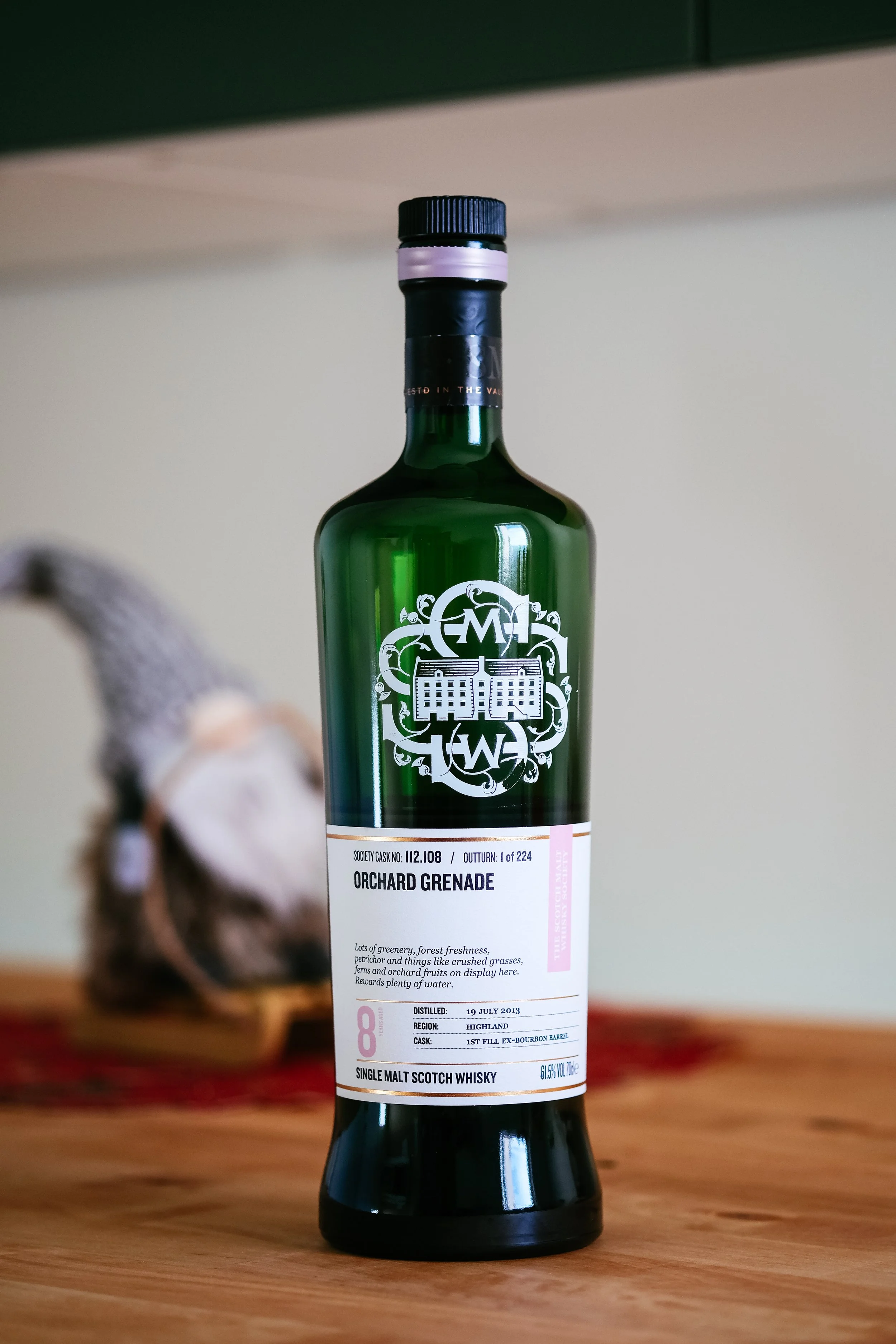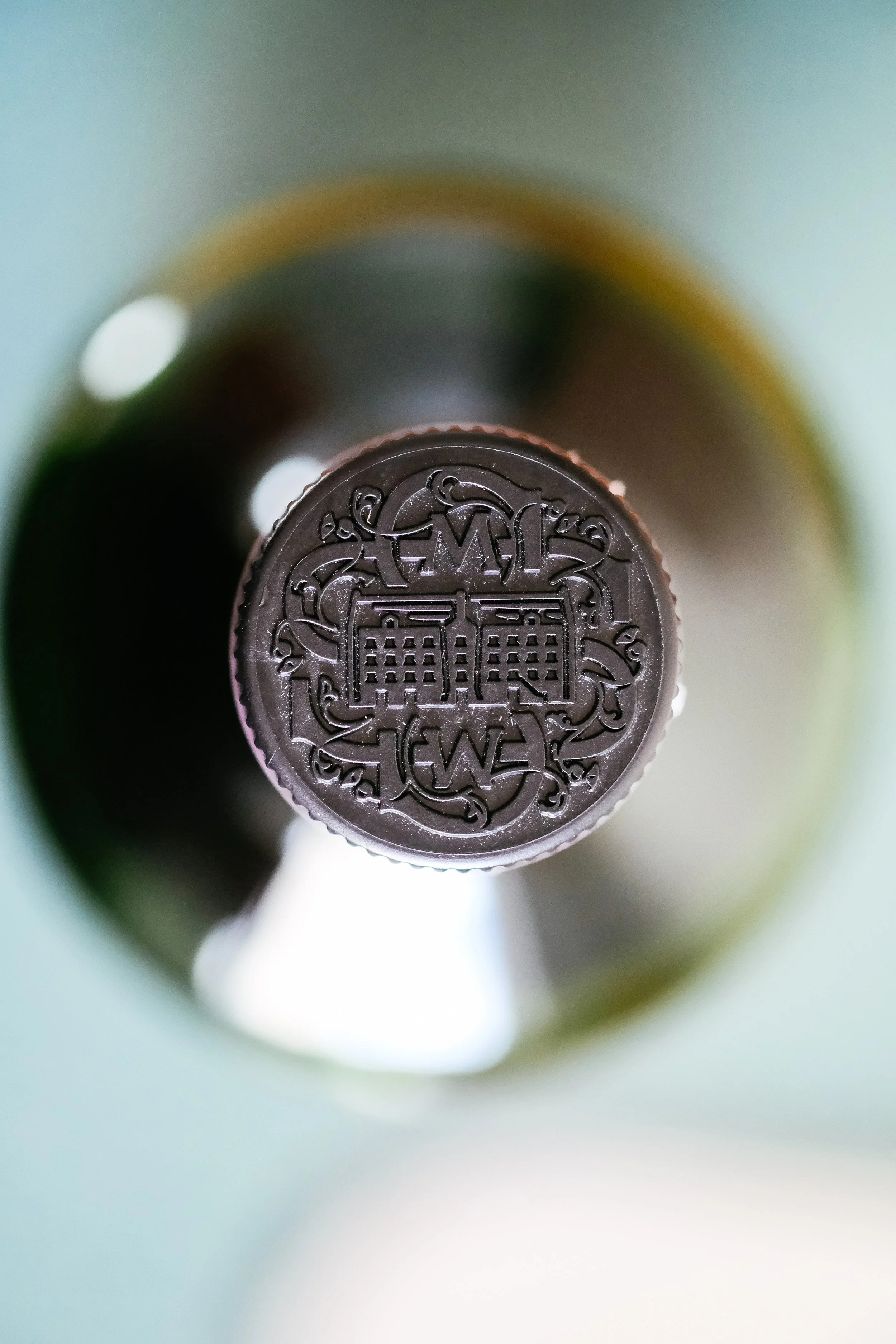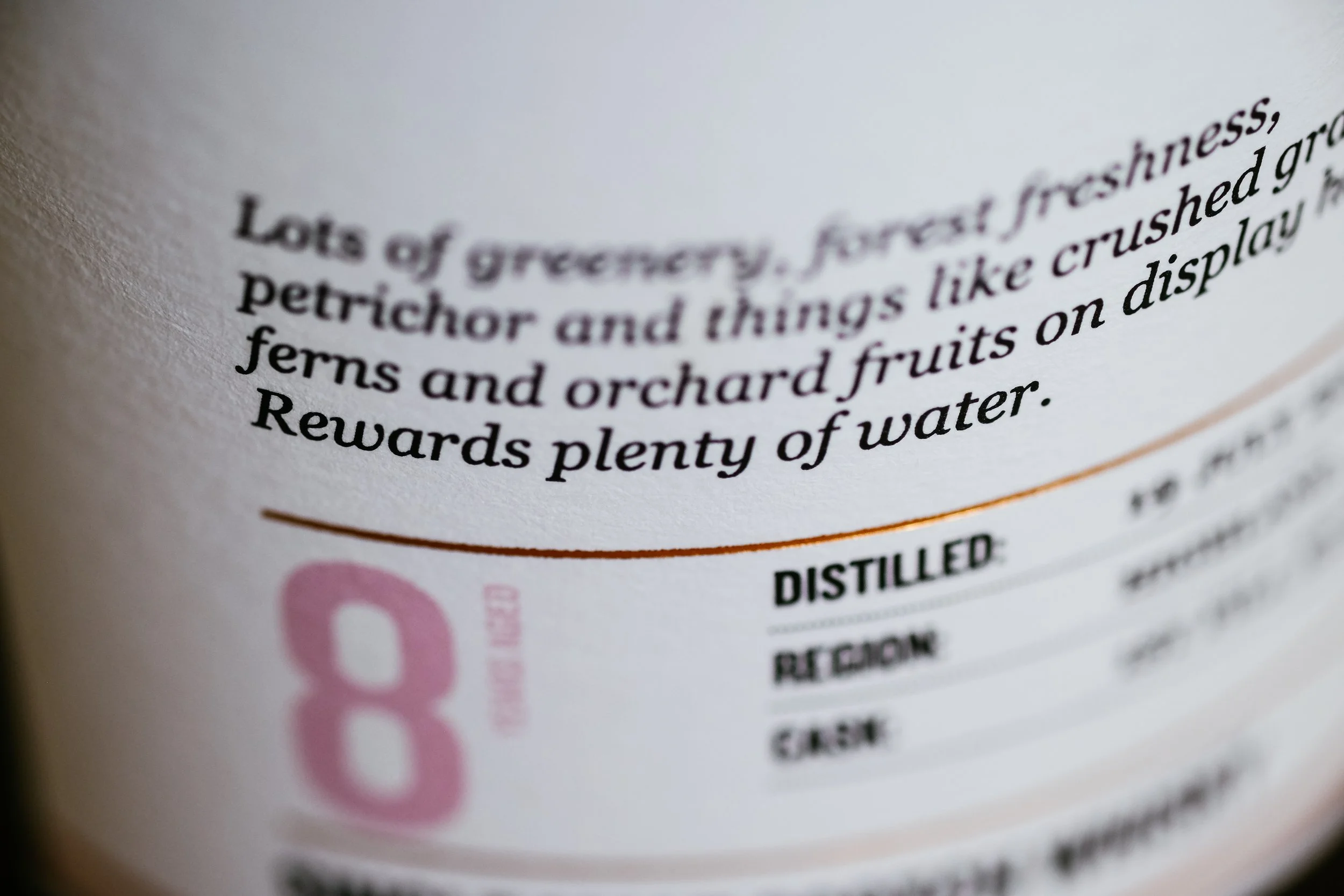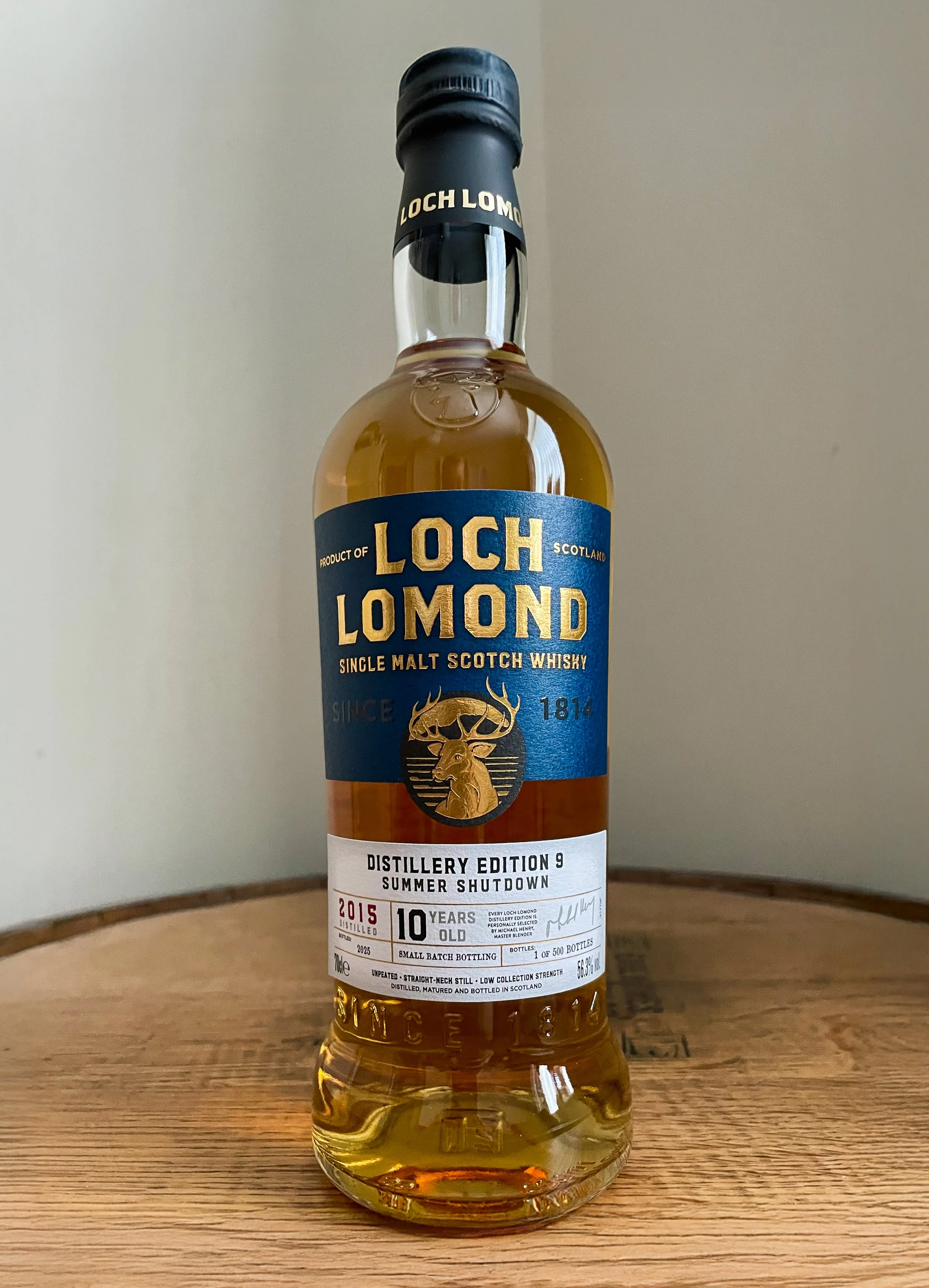Loch Lomond Inchmurrin 8yo
SMWS 112.108 Orchard Grenade | 61.5% ABV
Score: 8/10
Something special.
TL;DR
Magic sauce
It’s all in the numbers.
Numbers dominate everything we do, and lately everything we see as well: from the computer or phone you are reading this on to the algorithms used in targeting your ads (although never from us - we don’t do ads).
Whisky is all about the numbers too. Sure, I could rant about the publicly traded mega-giants like Diageo and their financial numbers, but that’s no fun. I’m more interested in vatting percentages and how they have varied over the years for core range single malts. How many seasoned casks are needed to achieve the same sherry influence into a vatting? If a vatting is normally 80% ex-bourbon and 20% ex-sherry casks, how much did it used to vary with older sherry casks and how little variation is occurring now with the supposedly more consistent seasoned casks… and so on.
Also, how new make entry strength affects the extraction of various compounds from the wood barrels. Some distilleries use a lower entry strength (e.g., 52% abv) while others use a long-standing “standard” entry strength of 63.5% abv, and many fill at higher strength - especially when the cost of casks are high.
Then you’ve got the myriad of various temperatures of mashing and distillation, volume of mashing waters, mass of barley, phenolic parts per million (PPM) of your peated malt, temperature of distillation, surface area of the still, lyne arm, and condensers, and the list goes on and on and on. While making whisky - and other beverages such as wine - can sometimes be viewed as romantic and down to the “touch” of the maker, it really comes down to the numbers, whether you understand them or not (ahem, Springbank).
When it comes to bottles, the Scotch Malt Whisky Society (SMWS) also relies on numbers. Distilleries are given a unique number, providing a numerical prefix from which we always have to annoyingly reference someone's cheat-sheet for the distillery codes. Another sequential number provides the release details, allowing you to see where the bottle sits in the overall release lineups. It’s a pretty cool system, albeit a one that is growing more clumsy with the newly added distilleries increasing the prefix numbers.
I’ve been intrigued into SMWS membership of late, albeit hesitantly. A weakening of the Canadian dollar, increased auction house fees, and ever-rising shipping fees means it’s no longer as economical as it was to be snagging from UK-based auctions like the SWA. Some of the latest SWA auctions featured the lowest SMWS bottles at £45 without fees etc. Using my handy auction calculator, that works out to be a $175 bottle of whisky by the time it lands in my hands. Yikes. So that means that if I want to be chasing SMWS bottlings I should be looking at buying them locally.
SMWS employs an annual membership, which for me, costs $125 per year or comes free with your first purchase of a $180 or more of SMWS bottles from select retailers. This membership (in Canada) in turn provides:
Exclusive access to a variety of new single cask bottlings (called the "Outturn") each month
Advance notice of the popular monthly Outturn Tastings
Membership card and copper lapel pin
Access to the award-winning, monthly online whisky magazine unfiltered
SMWS dram discounts at SMWS Partner Bars around the world
Exclusive access to members’ Society venues in Edinburgh, London, Glasgow & around the world
Now I don’t know about you, but for me, I couldn’t give a rats behind about a membership card, lapel pin, an online magazine, or access to SMWS Partner Bars or Society venues. I’m never travelling to those locations, and if I am, I’ve likely got the family in tow and I’m not disappearing to go drink some whiskies by myself. So all of those “perks” are completely lost on me, and likely many around the world as well. Couple this with a yearly membership renewal of $120 for the privilege of buying single casks whiskies, and I’m struggling to see the value proposition, especially when these bottles are starting at $150 CAD (£80 ish) for 7- 8 year old whisky. Again, the numbers don’t lie and that’s expensive whisky.
Now this is a relatively short lead-in for a whisky review here on Dramface but there’s a reason for that.
Hint: a Dramface stats deep-dive in The Dregs!
Review
Loch Lomond (Inchmurrin) 8yo, “Orchard Grenade” SMWS 112.108, 61.5% ABV
£45 at auction, CAD$130 (~£75) landed with shipping, duty and fees
Score: 8/10
Something special.
TL;DR
Magic sauce
Nose
Straight pour: fruit tree blossoms, cold red apples just picked from a tree, rich honey and vanilla cake, wet morning dew, touch of beechwood/sandalwood hiding underneath. This is bright, fresh, and enticing. The nose belies the alcoholic strength hiding within.
With a couple of drops of water: baked apple pie, vanilla ice cream, with some tropical fruit joining the fray now with mango and papaya.
With a healthy sploosh: ex-bourbon magic with vanilla, sliced almonds, your traditional baking spice combo, with tinned peaches and apple pie. The blossom aspects have popped up again, helping to brighten the nose. This smells creamy and luscious, not thin and young.
Palate
Straight pour: velvety, powerful, and warmly sweet entry, again hiding the 61.5% strength. Warm honey, like licking the honey spoon after dunking it in a cup of black tea. Cinnamon tingles. Dash of vanilla. Cocoa and mocha undertone. Crisp apples are here too. Mega creamy mouthfeel. (7/10)
With a couple drops: instant transformation to white chocolate, tinned peaches, vanilla ice cream, nutmeg joins the cinnamon tingles, undercurrents of oolong tea. The creaminess has dropped off and replaced with more aggressive tingles and slightly mouth-drying feel. (6/10)
With a healthy sploosh: oh my, magic sauce with velvety mouthfeel coming back. Warm vanilla ice cream draped over a hot slice of apple coffee cake, cinnamon again, a lovely woody oak note appears near the end providing an almost savoury and mildly tannic counterpoint to the sweeter initial notes. Long lingering finish of vanilla, apples, and cream. (8/10)
The Dregs
It’s all in the numbers. SMWS has decided to stake their entire structure on numbers. As you can see, water and dilution helps transform this beast into a magical 8/10 depending on the final % ABV number. But you know what else uses lots of numbers? Dramface.
Specifically our scoring.
It’s been a while since we’ve had a nerd-out over the numbers. Now leading this off with an apology: without writing a dissertation, you’re likely to not see the exact numerical summary or comparison here that you might be interested in. Why? Well put simply, there are many, many ways you can slice and dice data. Any data engineers or statisticians will agree that more data is always better, but along with more data comes increased complexity and decreased clarity on face value or cursory comparison of all variables. Plus, I don’t think you will want to be looking at tables and charts forever too! Now where to start…
I think it makes the most sense to start at the top, which is to say let’s take a look at the overall distribution of scores of the 1,392 whiskies we’ve reviewed as of October 31, 2025. Yes I know there’s a fair bit of time between when I took my snapshot of the data and this review being published, but that’s the beauty of doing this Dramface thing in our spare time!
As you can see below, we really enjoy our 6 & 7 scoring whiskies, with a near equal distribution of the neighboring average 5 & exceptional 8 scoring whiskies. Makes sense when you consider most of us are buying whiskies that are intriguing, single casks, from bottlers or distilleries we trust to provide quality.
And because we also publish and also record the prices we pay for each whisky, we can cross analyze the average price per whisky score. Seems to be a timely comparison to see what some Christmas gifting money could buy someone too!
Of the 1,302 whiskies that we have pricing data recorded for, we see that, drumroll please, price doesn’t matter as much as many think for the whiskies that you and I are looking for. Between a 4-7 scoring whisky, £20 difference is all that covers the range. An illustrious 8 scoring whisky is coming in at a lofty £107, which can seem quite spendy, but if we take out the 4 whiskies found in this score range that were over £500, we see that a score of 8 comes in at a more palatable £94.
I found the lower scoring 1’s, 2’s, and 3’s interesting because it seems that the few dozen whiskies we’ve scored that low were all priced higher, or objectively poor value for the experience.
Alright Broddy, how ‘bout you tell us how Dramface keeps messing with the scores when considering the price or value of the whisky for the experience. It is the drum that many keep banging. We have coincident scoring and pricing data on 1,033 whiskies where the authors have clearly stated that the price paid did or did not alter the score. I’d say that’s a fairly large dataset to now set about answering the burning question many critics have: are Dramface scores considering prices too much and the value statement is messing with the scores?
Well, I think we can put this argument to bed. The vast majority of whiskies we’ve reviewed generally fall into these camps where i) the authors do not use pricing modifications in their scoring because they don’t believe in it (we are all individuals here after all), or ii) the authors believe in considering value for the experience and quality.
For fun, a single whisky featured a mega 5 point reduction, going from a ‘highfalutin’ 8 down to a basement 3! While this is obviously a very specific case, it goes to show the power of the consideration of value, but also the fact that not many of our reviews don’t feature any pricing modifications.
And if we look at the average price of the 1-, 2-, and 3-scoring whiskies above, most of these whiskies were quite expensive and didn’t live up to their promise; and some of them featured a corresponding reduction in score if the author believes in score modification.
Another interesting comparison is the difference between official bottlings and independent bottlers. Over 62% of our reviews come from official bottlings direct from the distillery, with the balance coming from independent bottlers. OBs generally had an average score of 6, while IBs averaged a score of 7. Fun little comparison indeed!
I think I’ll end the comparisons here with one last analysis, for fear of opening up a further pandora’s box with numerous comparisons that only the most data nerdy of us would enjoy. One of the fun and powerful aspects of Dramface is the multi-author reviews. While it’s nice that a single author provides their perspective on a whisky, it is all the more balanced and meaningful when others join in with their views and opinions. I believe this also provides a better review for you as well, removing some of the potential for bias or sensitivities an author might have.
Again, of the 1,392 whiskies we’ve reviewed in this statistical snapshot, we have 147 multi-author reviews. I was honestly surprised, and quite chuffed, about this little insight. Over 10% of our reviews have more than one author, giving you a more detailed and thorough look at a whisky before purchasing it. That’s a helluva strength, even if we do say so ourselves!
Score: 8/10
Tried this? Share your thoughts in the comments below. BB
-
Dramface is free.
Its fierce independence and community-focused content is funded by that same community. We don’t do ads, sponsorships or paid-for content. If you like what we do you can support us by becoming a Dramface member for the price of a magazine.
However, if you’ve found a particular article valuable, you also have the option to make a direct donation to the writer, here: buy me a dram - you’d make their day. Thank you.
For more on Dramface and our funding read our about page here.





































